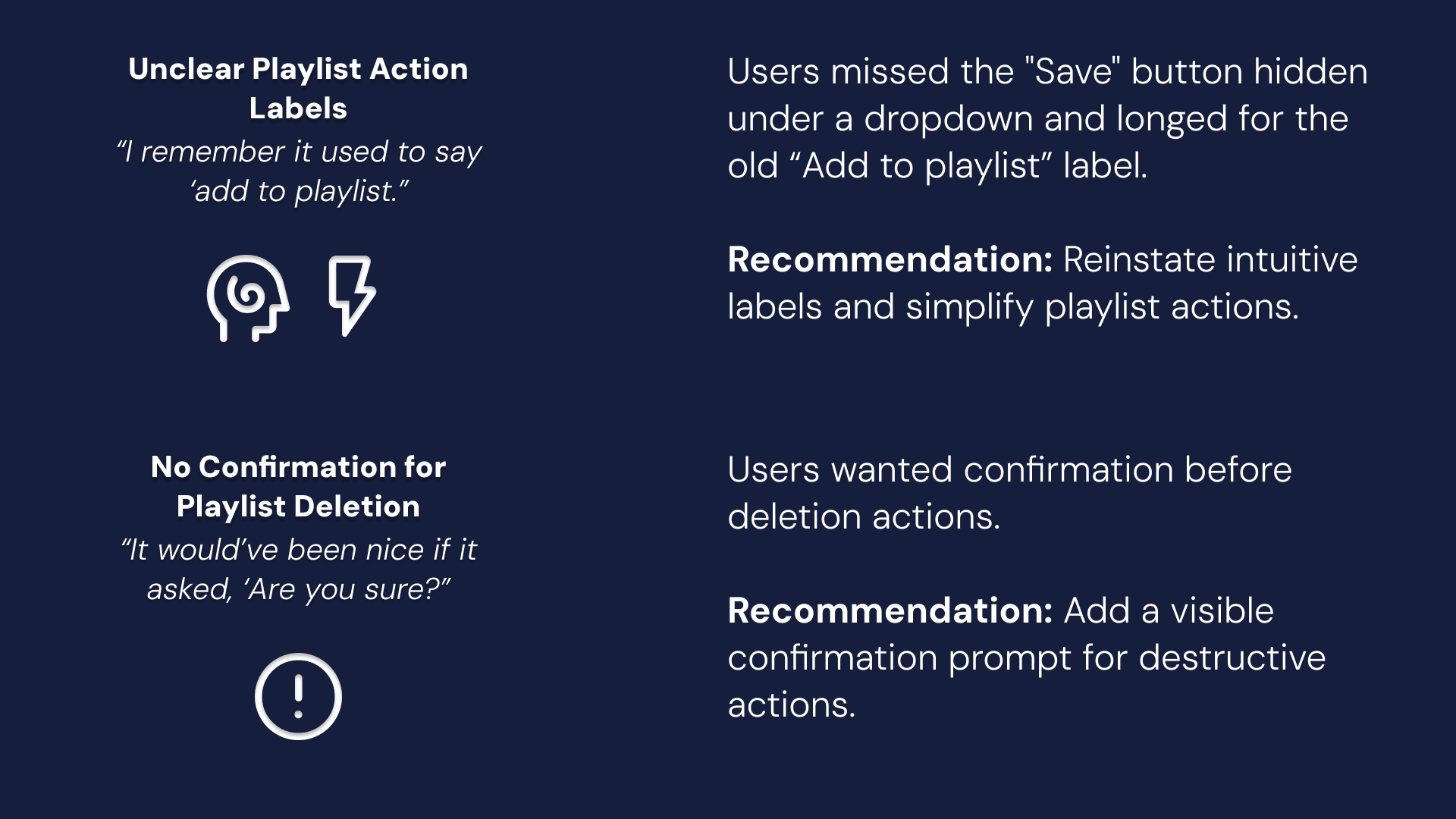Usability Research
YouTube web app.
Platform: YouTube Web app
Tools: Google Meet, Dovetail, Figma, Microsoft Office
Role: UX Researcher
Duration: 1 week - Group project
Overview
Within my Graduate studies of Human-Centered Design, I led a one week usability evaluation of the YouTube web application.
The goal was to identify gaps across core features: search, playlists, subscriptions, and navigation then, recommend improvements aligned with Neilson’s usability principles.
This project challenged me to apply structured research methods within a tight timeline while communicating insights in a way that could guide product and design decisions.
Research Objectives
Assess how easily users could find and watch content on their primary devices.
Evaluate learnability and memorability of features, especially rarely used ones.
Observe errors during navigation and propose improvements.
Measure efficiency in completing tasks like playlist management and subscriptions.
Gather qualitative feedback to understand user reactions and frustrations.
Methodology
From a survey of 16 YouTube users, we selected four diverse participants—ranging from casual viewers to advanced users (students, educators, and creators).
Sessions were conducted remotely and included tasks such as:
Searching for videos
Managing playlists
Exploring Shorts
We captured both quantitative metrics and qualitative feedback, analyzing the results to uncover themes.
Key Findings
These insights shaped task flows and highlighted the importance of cross-platform usability.
High Engagement: 69% of participants used YouTube daily.
Device Diversity: More than half accessed YouTube across multiple devices (laptop, smart TV, consoles).
Usage Behavior: All participants used YouTube for entertainment, while over half also used it for learning.
Playlist Management: Only 44% actively managed playlists, signaling friction in how this feature is understood and used.
Recommendations
Our recommendations focused on clarity, guidance, and consistency:
Redesign playlist icons and labels to improve discoverability.
Provide lightweight onboarding or visual cues for Shorts to help users understand the feature.
Add confirmation messages for deletions to reduce user hesitation and errors.
Ensure consistency in features and interface patterns across desktop and mobile to build user trust.
impact and Reflection
The study revealed that even a platform as familiar as YouTube presents usability challenges that impact daily engagement. Small adjustments like clearer labels or timely feedback, can meaningfully improve confidence and efficiency for users.
For me, this project reinforced the value of structured usability testing. I learned how to scope research quickly, analyze data thematically, and translate findings into actionable design opportunities. It also strengthened my ability to collaborate with peers and communicate insights in a way that balances both user needs and product goals.



